
November 6th saw our cohort touring the Two Rivers Gallery in downtown Prince George. It was such an interesting and emotional visit, as the two current installations are very striking statements on climate change and threats to our local environments. The lovely Sophia was kind enough to give us a tour (highly recommend her for future visits) of the exhibits and lead us through a unique and creative art project of our own after the tour.
Exhibit 1: Nonreturnables
Nonreturnables is a collection of artwork made by artists from across British Columbia and the relationships we share with plastic in the biological world. This exhibit was the definition of “REUSE” in the Reduce, Reuse, Recycle slogan! The centrepiece of this exhibit was a large flowing cyanotype hanging instalment with cushions for viewers to lie on underneath; It is titled ‘Plasticosis’ by Desirée Patterson.
I was really drawn to this piece, as I am from the coast (Vancouver area) and am very well-versed with shoreline garbage abundance. It was also very impactful to me as the plastics with which this piece was created are those that were collected from the beaches around Vancouver. I found that the interactive component of this art piece was effective and educational but also very soothing as the cloth would sway gently like the ocean from the perspective of ocean creatures. The use of the cyanotype process really allowed for the fabric to emulate the ocean as some of the fabric developed more than others allowing for a variation of blues to be present in this natural photography process.
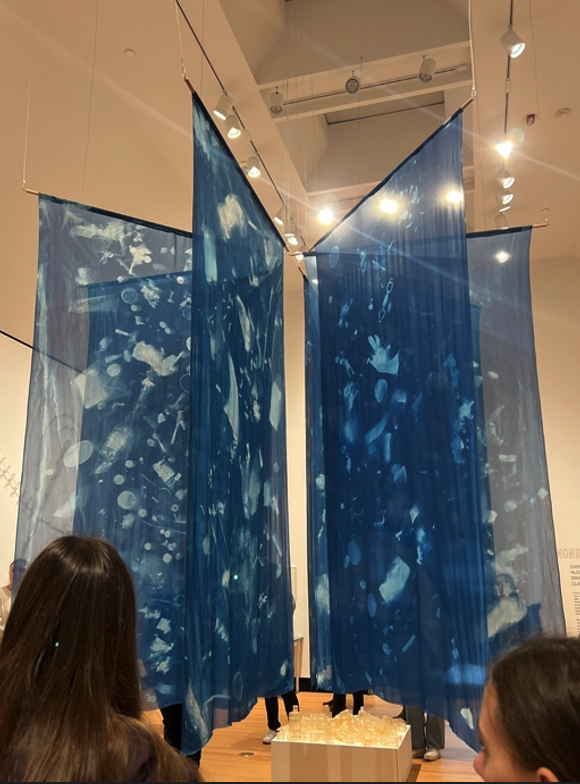

How could I use this exhibit in my teaching?
Easy! By introducing this exhibit, and other art that is similar in creation (using recycled materials, I could integrate this idea in multiple contexts: a science program, geography program and art program, for this art process involves learning about the health of our environment, the cleaning of our landscapes and the creation of art from the garbage in which we would collect during the process. By using garbage in which the students themselves have collected and a brief write-up of where they collected said garbage, I believe this exhibit could easily flow into a variety of courses and be a very fun, yet educational process.
Exhibit 2: Dismantled Worlds
Dismantled World by Jude Griebel is a humorous yet nightmarish collection of works representing the “toxic relationship between natural life and human industry”(1). The collection was seven distinct humanoid sculptures made of mixed media depicting monster-like creatures made of natural occurrence, natural disasters and human industry as well as two piles depicting types of food pyramids. As the gallery’s website states, “This surreal sculptural interpretation of capitalism and resource extraction blends anatomy with landscape and satirizes the effects of industry-caused climate change”.
This was a very disturbing collection, as you feel very connected to these disastrous event creations, especially since multiple of the beings represent dismantled and disastrous coastal monsters made of cement ports, oil spills, displaced molluscs and weeping icebergs.
Sophia, our host, led us through an exercise to better connect with the pieces which included deep breathing, focusing on multiple aspects of the piece and deep thinking. It was a very centring exercise that really allowed us to create relationships with the pieces. As wonderful as the exhibit and the exercise were, this collection really disturbed me, meaning that it was extremely effective!
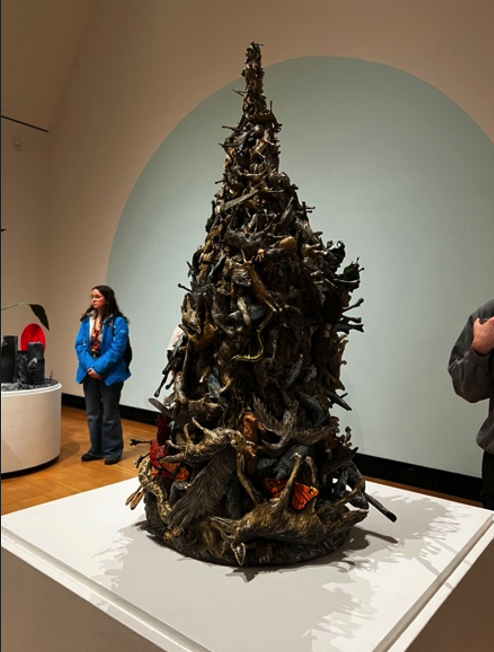
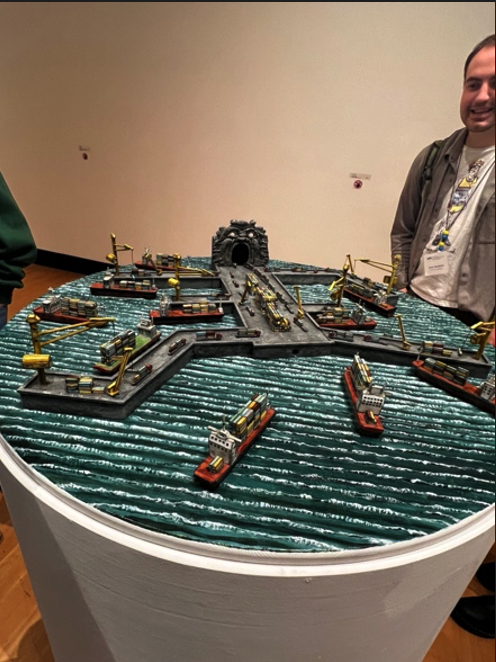
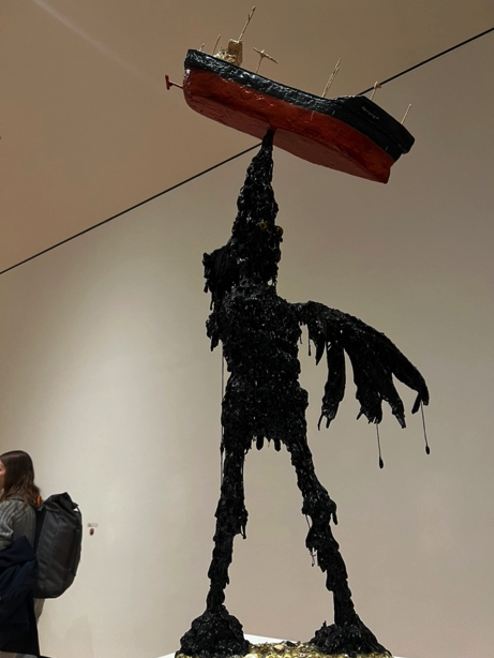
Final activity:
Our Final activity at the gallery was the creation of our own monstrous recycled creations first drawn by hand and then attempted with playdough. There were multiple questions for us to fill in in the creation of our creatures such as: What is it made up of? Where does it live? And so on. My creation is a coastal creature who lives within the Indian Arm and Burrard Inlet. Their name is S.S Ingsdon and they are made up of old buoys, fishing lines, old fish nets, seaweed and shells. My creation’s purpose is to haunt those who litter in the ocean in the areas in which it abides.
This activity was a lot of fun and is something that I could see easily applied to the education of students of all ages. It allowed for so much creativity and was such a fun bonding experience between our cohort.
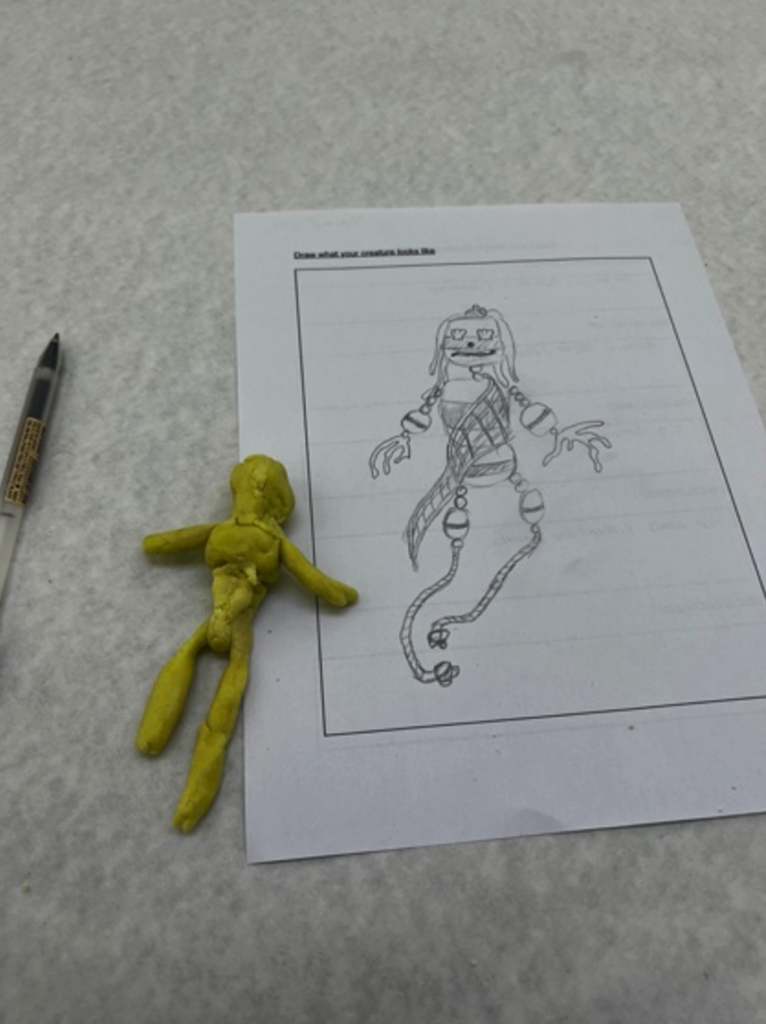
References:
- Two Rivers Gallery. “Current Exhibitions – Two Rivers Gallery – Prince George BC,” February 8, 2023. https://www.tworiversgallery.ca/exhibitions/current-exhibitions/.

Leave a Reply